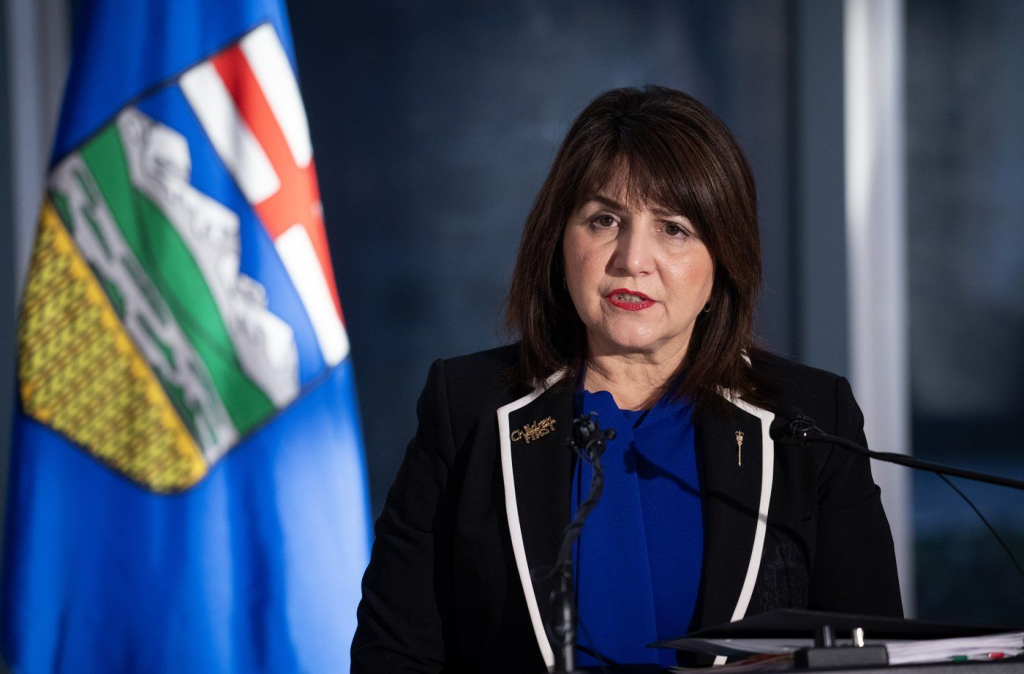Mobile carriers urged to improve accessible phone plans for deaf and blind Canadians

Posted May 21, 2023 8:00 am.
There’s a sense of worry that creeps up on Lisa Anderson every time her phone alerts her she is near the end of her monthly data limit.
For Anderson, who is deaf, each megabyte of data is more crucial than it would be for the average hearing person who doesn’t rely on video calling applications for every mobile conversation.
But due to data throttling — a common traffic management practice used by mobile carriers that reduces internet speeds — Anderson said exhausting her data allowance leads to “detrimental barriers.”
“The connection on my video is blurry. I’m faced with unclear video communication on one or both ends of the conversation. This impedes my sign language communication in emergencies, for example, when I’m outside of my home,” the Vancouver woman said in an email.
“I have thoughts such as ‘I hope I don’t have an emergency until the next billing cycle.’ This is an added stress.”
As a June 1 deadline looms for major telecommunications companies to submit reports to the federal regulator on their accessibility efforts, advocates from the deaf, hard of hearing, blind and partially sighted communities say Canada’s mobile carriers are falling short of meeting their needs.
In February, the CRTC directed telecoms to file such reports on an annual basis following consultations it held on barriers to wireless connectivity.
Advocates told the commission that barriers include the affordability of carriers’ accessible plans, the way they offer data and the way they verify eligibility for these plans.
“Targeted action is necessary to help ensure that accessible plans more fully meet the needs of persons with disabilities,” the regulator stated, calling on carriers to ensure data throttling policies don’t prevent accessibility apps from working as needed.
Accessible plans offered by major carriers such as Rogers Communications Inc., Bell Canada, Telus Communications Inc. and Videotron largely take the form of a $20 monthly rebate on their mass-market plans, along with other company-specific add-ons, according to the CRTC.
During the regulator’s consultations, it said major carriers maintained that throttling unlimited data plans “is necessary to maintain network quality for all customers” and that “even if there is a disadvantage, it is not undue” as video communication is data-intensive.
Anderson, a telecommunications accessibility consultant for the Deaf Wireless Canada Committee, said that while discounts are a positive first step, data packages should go beyond those offered to hearing consumers.
“For deaf, deaf-blind or hard of hearing persons that use sign language, there is a dependence on video communication over wireless networks,” she said, noting that people in those communities “generally earn less than their hearing counterparts and therefore are less likely to afford mobile devices.”
“This means for deaf people there is a need to have larger (data) packages available over the wireless network, and there must be true unlimited data packages for this socio-economic accessibility group.”
The same goes for blind or partially sighted Canadians who rely on navigation apps to get around, said Thomas Simpson, executive director of the CNIB Foundation’s Come to Work program.
“More and more, there’s these types of apps that are being created and used, which is great. That helps with the independence of someone who’s blind or partially sighted,” he said.
“But the more those are used, the more data that is used. So that’s definitely one of the huge barriers.”
The Deaf and Hard of Hearing Coalition, which represents members in Ontario, Nova Scotia and Newfoundland and Labrador, said accessible plans should be capped at $35 per month and contain unlimited data, voice calling and texting with no overage fees, no throttling and zero-rating for use of video conferencing applications.
Added Kimberly Wood, founder and chair of the Canada Deaf Grassroots Movement: “In a perfect world, a deaf or hard of hearing customer comes to a mobile company, we get to choose what kind of phone we would like to have and then be able to choose the accessibility plan with a good discount and unlimited data plan at ease without arguing or explaining what accessibility plans are.”
But she said accessible plans aren’t “deaf-friendly” and described the current costs as “not affordable to those who are receiving disability benefits or low income.”
In a statement, the Canadian Telecommunications Association said the industry is “committed to ensuring wireless services are accessible to all persons, including persons with disabilities.”
Industry consultations found that a one-size-fits-all approach with mandated plans or service specifications was not the right way to proceed, said spokesman Nick Kyonka.
“Like all Canadians, persons with disabilities are best served when service providers are able to offer their customers the ability to choose from a variety of plans and services to select the one that meets their needs.”
Bell spokeswoman Jacqueline Michelis noted the company offers additional discounts and promotions for persons with disabilities, including exclusive pricing on apps built specifically for accessibility needs.
“We promote our accessibility discounts and add-ons in many ways, including on our websites and through our Accessibility Services Centre (which is a specialized team of customer service agents that are dedicated to assisting persons with disabilities) and in-store accessibility brochures,” she said in an email.
Meanwhile, Rogers spokesman Cam Gordon said customers with accessibility needs can receive support through its dedicated team.
“We regularly engage Canadians to better understand their accessibility needs and we look forward to continued consultation, alongside persons with disabilities and industry partners, to reach our shared goal of removing barriers to this critical connectivity,” Gordon said in an email.
Telus spokeswoman Kalene DeBaeremaeker said the company “regularly consults with accessibility partners as well as people with disabilities incorporating their feedback to deliver products and services tailored to their needs.”
She said Telus has partnered with March of Dimes, a rehabilitation and advocacy charity for people with physical disabilities, to support customers requiring professional assistance to independently use or control their mobile device.
All three companies highlighted their policy of zero-rating data from video relay services, which enables customers to communicate virtually through a sign-language interpreter free of charge and without the data counting toward their monthly allotment.
Despite companies’ stated efforts to promote their plans, advocates say that information can be difficult to find, especially in-store, where staff may not receive training about those services.
“Accessibility plans are not widely known. Those people who are asked about it have no idea that they exist,” said Simpson, of the CNIB Foundation.
“Information does exist online, but you really need to know where to find them in order to look for it.”
In its decision, the CRTC said there were 14,453 subscribers to accessible plans across all Canadian carriers — a figure it considers “to be significantly lower than could have been expected” as it acknowledged carriers have a responsibility to increase awareness of their offerings.
“Unfortunately, accessibility really is never at the forefront of anyone’s thoughts about program design or delivery, or ensuring that people with disabilities are included as a customer base,” said Simpson.
“I am hopeful that these accessibility plans at the very least try to create a culture change within the telecom industry to really consider people with disabilities as people who pay for their services.”
Rogers Communications is the parent company of this website.








